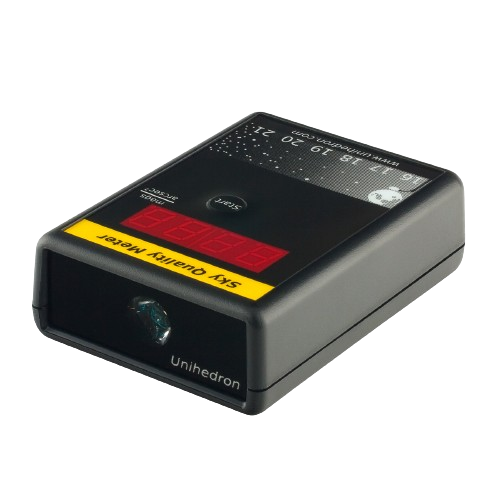Guidelines
Data collection: Collect data on the brightness of the night
sky in magnitudes per square arcsecond using the Sky
Quality Meter-L. Record the location, date, and time of each
measurement, and note any changes to the environment
that may affect the measurements (such as the presence of
clouds, the phase of the moon, or nearby light sources).
Reporting: Submit monthly reports to the grant committee
detailing your data collection efforts and any notable
findings. Be sure to include any challenges or unexpected
events that may have affected your measurements.
Outreach: Share your findings with the wider community
through presentations, blog posts, or social media. Consider
partnering with local astronomy clubs or science
organizations to share your data and promote awareness of
light pollution.
Calibration: Ensure that the Sky Quality Meter-L is calibrated
regularly using a known light source. Record the calibration
process and results in your data collection records.
Protection: Protect the Sky Quality Meter-L from damage by
using the provided carrying case and storing it in a safe
location when not in use. Follow all safety precautions when
using the meter, including avoiding looking directly at the
sun.
Maintenance: Keep the Sky Quality Meter-L clean and free of
debris, and replace the battery as needed. Follow the
manufacturer's instructions for maintenance and care.
By following these guidelines, you will be able to make the most of your Sky Quality Meter-L grant and contribute valuable data to the study of light pollution. Good luck!


Eligibility Criteria
Data collection: Collect data on the brightness of the night
sky in magnitudes per square arcsecond using the Sky
Quality Meter-L. Record the location, date, and time of each
measurement, and note any changes to the environment
that may affect the measurements (such as the presence of
clouds, the phase of the moon, or nearby light sources).
Reporting: Submit monthly reports to the grant committee
detailing your data collection efforts and any notable
findings. Be sure to include any challenges or unexpected
events that may have affected your measurements.
Outreach: Share your findings with the wider community
through presentations, blog posts, or social media. Consider
partnering with local astronomy clubs or science
organizations to share your data and promote awareness of
light pollution.
Calibration: Ensure that the Sky Quality Meter-L is calibrated
regularly using a known light source. Record the calibration
process and results in your data collection records.
Protection: Protect the Sky Quality Meter-L from damage by
using the provided carrying case and storing it in a safe
location when not in use. Follow all safety precautions when
using the meter, including avoiding looking directly at the
sun.
Maintenance: Keep the Sky Quality Meter-L clean and free of
debris, and replace the battery as needed. Follow the
manufacturer's instructions for maintenance and care.
By following these guidelines, you will be able to make the most of your Sky Quality Meter-L grant and contribute valuable data to the study of light pollution. Good luck!


